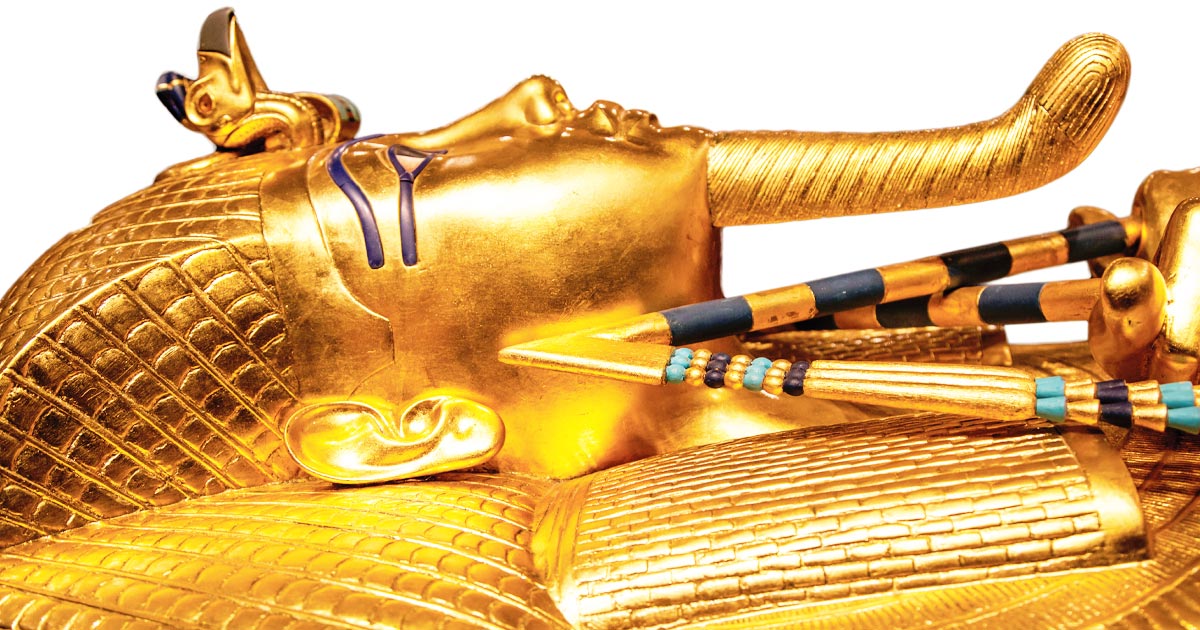By James Patterson
(50PlusWire) The National Geographic Museum in Washington, D.C., has staged an impressive exhibit on the 100th anniversary of the opening of King Tut’s tomb in Egypt, which is on display until Monday, February 6, 2023.
In November 1922, British archaeologists entered King Tut’s tomb in Egypt. According to the BBC, “the tomb has cast a spell upon the world.”
Ninety years ago, actor Boris Karloff underwent hours of grueling makeup to become a 3,000-year-old mummy brought back to life in Universal’s atmospheric 1932 horror film The Mummy.
Dozens of mummy movies later, the world is still fascinated by all aspects of King Tut’s tomb, including the famous curse on those who opened it for the world.
I have seen Karloff as the Mummy so many times that I have lost count. My aunt and uncle, who lived in Boston, fed my interest in Egyptian history while I was a high school and university student.
Egypt’s famous King Tutankhamun Exhibit first toured the United States from 1961 to 1963, with more than a million people visiting 17 museums, to gaze upon ancient treasures. Richmond, Virginia, was as far south as the Boy King’s treasures traveled. My aunt and uncle saw it in Boston. I envied them.
King Tut’s artifacts again toured the United States, with a stop in Canada, from 1976 to 1979. Mummy-fever was in the air. More than 10 million people saw the exhibit, which included items never before on display outside of Egypt.
I was a college undergraduate in Alabama when the King Tut Exhibit traveled to the New Orleans Museum of Art. I had to see it.
In January 1978, I boarded a bus by an A&P grocery destined for New Orleans with money from my aunt and uncle, to “have a good time.” It was unforgettable.
During my overnight bus trip, I managed to sleep a few hours and arrived at the New Orleans bus station before sunrise. I stepped outside into the parking lot for some cold January air. An old man smoking a cigarette was the only other person there. I kept a cautious distance. He walked toward me.
The man, I judged, was not a risk. He asked about my business in New Orleans. I told him I was a student in town to see the King Tut Exhibit.
“King Tut,” the man said. “You are here to see King Tut?”
“Yes, sir,” I told him, unprepared for his reply.
With memories of King Tut’s curse, I began to feel slightly uncomfortable at this point in our parking lot conversation. The man dropped his cigarette to the pavement.
“I am King Tut’s cousin,” the man said, his smile revealing poor dental hygiene.
At this point, I moved quickly back inside the bus station. In hindsight, I should have gotten a photograph with him. When will I ever meet King Tut’s cousin again?
At the New Orleans Museum of Art, I was hypnotized by King Tut’s gold death mask. The museum displayed the famous mask in a dark room with a bright light shining on it as it rested on a beautiful deep red velvet pillow. It was a stunning and unforgettable display.
Mummy fever was everywhere while the exhibit toured the United States in the 70s. Comic Steve Martin helped spread mummy fever with his silly song, “King Tut.”
When you see the Beyond King Tut exhibit at the National Geographic Museum, Tutankhamun’s New Orleans cousin could be in the audience. Be sure to get your photograph with him.
Or, write another zany hit song, maybe, “Tut’s Cousin.” There is money in mummy fever! Ask that “wild and crazy guy,” Steve Martin. MSN










